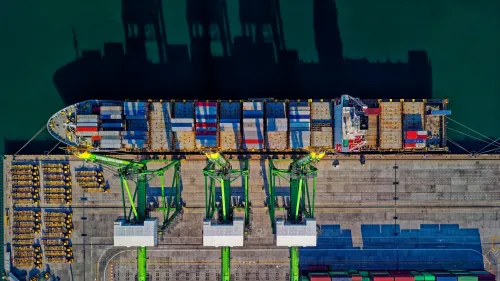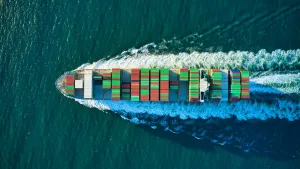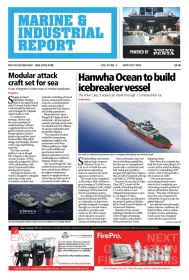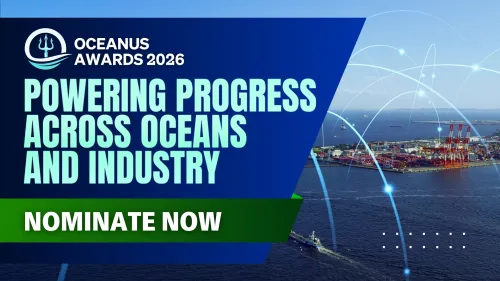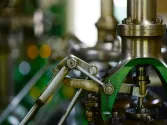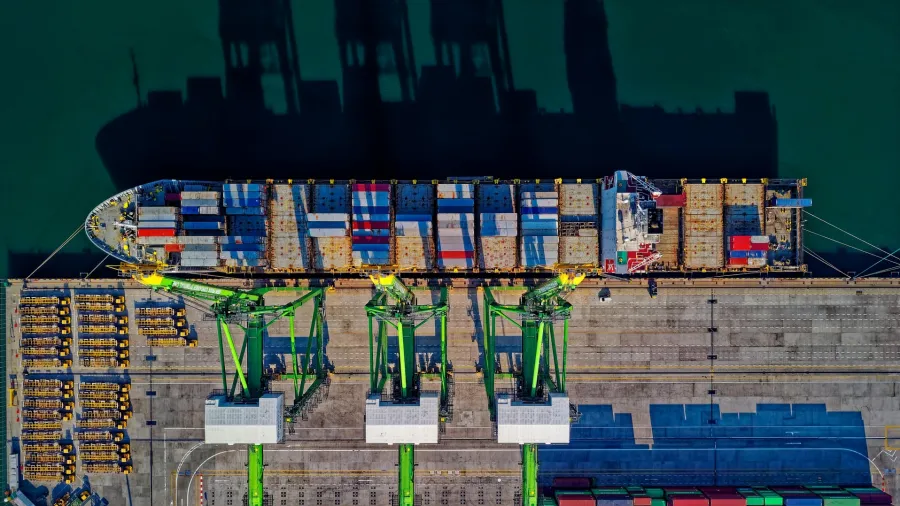
Autonomous shipping steers measured course, prioritises remote control
Over 40% of industry professionals view autonomous shipping as primarily "remote controlled" operations.
The global push towards autonomous shipping is taking a distinctly measured approach, according to a recent Roland Berger analysis of maritime automation trends.
Findings derived from a survey of over 20 experts at the Amsterdam Marine Equipment Fair reveal a clear industry preference for remote-controlled vessel operations over the full automation that was once widely anticipated.
The report said this measured trajectory signals a strategic caution within the sector, prioritising human oversight as the technology matures and regulatory landscapes evolve.
A clear preference for human oversight
The maritime industry's definition of autonomous shipping significantly diverges from concepts prevalent in ground transportation.
The survey noted that 41% of industry professionals—including shipbuilders, suppliers, operators, consultants, and infrastructure providers—view autonomous shipping as primarily "remote controlled" operations.
A further 29% define it as "partially remote controlled" systems, leaving an equal 29% who envision fully autonomous vessels.
This preference for maintaining a human in the loop reflects legitimate concerns surrounding safety, regulatory compliance, and the current technological readiness required for operating massive cargo vessels in dynamic international waters.
Moreover, the industry is adopting a more phased approach than, for example, the automotive sector.
The report said this emphasis on remote control aligns with practical maritime realities, considering the complexities of international navigation, highly variable weather conditions, and the high-stakes nature of transporting valuable cargo.
Diverging priorities commercial and military
Operational priorities differ markedly between commercial and naval maritime sectors. Commercial operators are primarily driven by operational cost reduction and efficiency improvements.
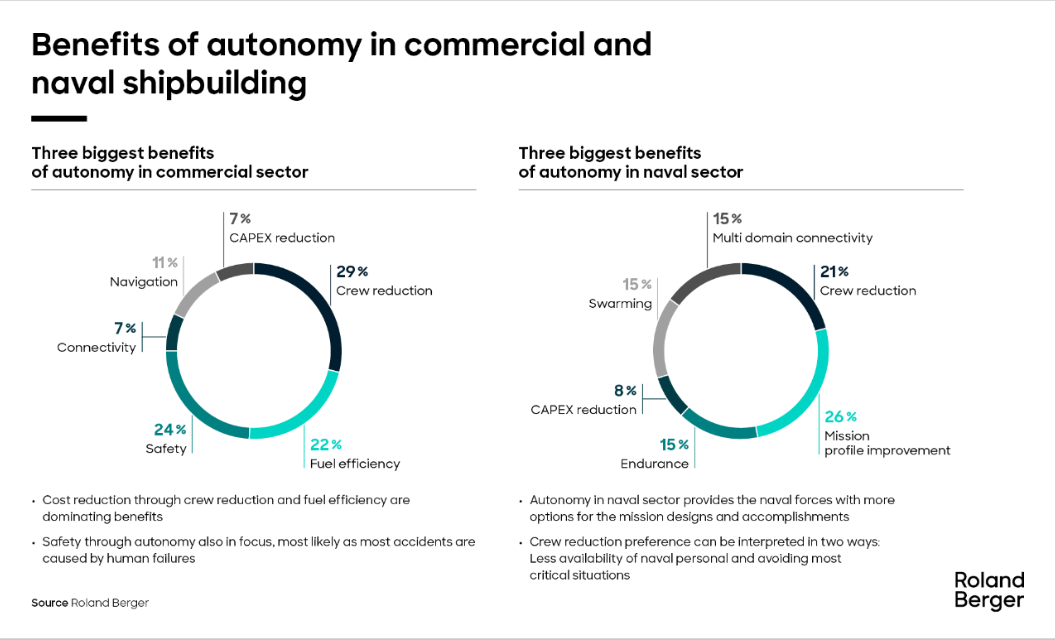
Some 29% of commercial respondents identified crew reductions as the main benefit of automation. This was closely followed by fuel efficiency optimisation, cited by 22%, and enhanced safety protocols, at 24%, ahead of a collection of lesser benefits.
In stark contrast, military interests center on enhanced mission capability rather than economic gains. Survey results indicated mission profile improvement is the key military priority, cited by 26% of naval respondents.
This was followed by crew reduction for dangerous missions at 21%, and better operational endurance at 15%.
Multi-domain connectivity and swarming capabilities each accounted for 15% of military priorities, with CAPEX optimisation trailing at 8%.
Naval interest in uncrewed vessels focuses on operational advantages such as enabling extended missions, reducing personnel exposure to dangerous situations, and providing new tactical capabilities through coordinated vessel operations.
Conversely, commercial interests view autonomous systems as a potential solution to the persistent shortage of skilled maritime workers, rising personnel and operational costs, and an opportunity to enhance safety given that human error contributes to three-quarters of all maritime accidents.
Systemic barriers slowing adoption
The slower-than-expected adoption of autonomous shipping technologies is largely attributed to systemic challenges rather than inherent technological limitations, the report noted.
Connected infrastructure represents the most significant barrier, cited by 28% of the professionals surveyed. This is immediately followed by regulatory uncertainty, with 26% expressing concern as the International Maritime Organization is not expected to issue comprehensive regulations for autonomous ships until 2030.
Furthermore, a lack of technology standardisation presents a notable barrier to market penetration, mentioned by 21% of respondents, alongside the availability of insurance at 14%, navigation support at 7%, and cost transparency at 5%.
“The industry must navigate a complex landscape where infrastructure, regulation, and standardisation must evolve in tandem with the technology itself,” Roland Berger said.
Substantial economic impact anticipated
Despite the current slower adoption rates, the industry remains highly confident in the future economic benefits.
Over 60% of survey participants anticipate significant reductions in operational expenditure (OPEX) from autonomous shipping. Specifically, 38% of respondents expect OPEX savings to exceed five percent, whilst 23% predict a reduction between two and five percent.
Another 15% anticipate modest savings between zero and two percent, with another 15% expecting no change.
Only 8% believe autonomous systems will increase operating costs. These optimistic projections are rooted primarily in anticipated reductions in crew costs and fuel efficiency improvements.
Crew expenses typically constitute 30-40% of a vessel’s total operating costs, making personnel reduction a primary economic catalyst for adopting autonomous and uncrewed ships.
Promising use cases and R&D focus
The survey identified specific vessel types and operational contexts most suitable for automation.
Passenger ferries and patrol or security vessels were each cited by 25% of respondents as the most promising use cases. Cargo ships and offshore support vessels were mentioned by 20% each. Tankers, at 7%, and private yachts, at 2%, showed limited interest in automation.
Cargo shipping is viewed as an ideal candidate due to its predictable routes, standardised operations, and significant potential for crew cost reductions, particularly for container ships and bulk carriers on established trade routes.
Ferry operations offer controlled environments and fixed routes suitable for automation, although regulatory approval for autonomous passenger transport remains a considerable hurdle.
Investment in research and development is concentrated on the core enabling technologies with navigation software as the highest priority, being the investment focus of 30% of respondents.
This is followed by sensors and camera systems at 25%, and remote control technologies at 20%.
Lower priorities include port infrastructure at 11%, personnel training programs at 9%, and propulsion systems at 5%.
Moreover, navigation software, requiring sophisticated algorithms for collision avoidance, route optimisation, and weather response, is deemed the most critical technology.
Advances in sensor technology are also driving development, with heavy investment in computer vision, artificial intelligence, and machine learning systems to enable real-time environmental awareness and automated decision-making.
The majority of companies, 53%, are dedicating five to ten percent of their total research and development budget to autonomous shipping applications. 13% spend as little as zero to five percent, whilst another 20% of firms are investing ten to twenty percent.
Above that level are the 7% of companies spending up to half of their R&D budget on autonomous technologies and a further 7% assigning more than half of their research budget to automation.
Global dynamics and future timeline
The development of autonomous shipping is heavily concentrated with Europe considered as the leading continent at 56%, driven by favorable regulation and environmental pressures.
Asia follows closely at 38%, demonstrating strong technological advances and manufacturing capacity.
The Americas, at 6%, show limited commercial activity, focusing primarily on military applications. The Global South currently exhibits no significant level of activity.
Industry professionals anticipate a gradual but substantial market penetration. Looking toward 2035, 40% of respondents expect autonomous vessels to have captured zero to five percent of the commercial shipping market, whilst another 40% predict a five to ten percent market share.
Taking a more optimistic view, 13% expect ten to twenty percent, and 7% even think they could constitute up to half of the market by 2035.
By 2040, the outlook is significantly more optimistic. Only 14% expect a market share of zero to five percent. The majority of responses are higher as 36% anticipate five to ten percent, 29% expect ten to twenty percent, and 21% predict a market share of up to half.
This timeline suggests most significant growth will occur between 2035 and 2040, aligning with the anticipated completion of the regulatory framework and the necessary development of infrastructure and technology.
The projected timeline of 2040 for widespread adoption provides realistic expectations, allowing sufficient time for the regulatory landscape to mature and robust safety protocols to be established.
“The path to standard autonomous solutions will be an evolution, not a revolutionary change of tack,” Roland Berger said.
The report emphasises the potential advantage of dual-use products serving both commercial and military markets, as applications in the military context may progress fastest due to reduced regulatory constraints, enabling faster technology validation and refinement for eventual commercial deployment.
